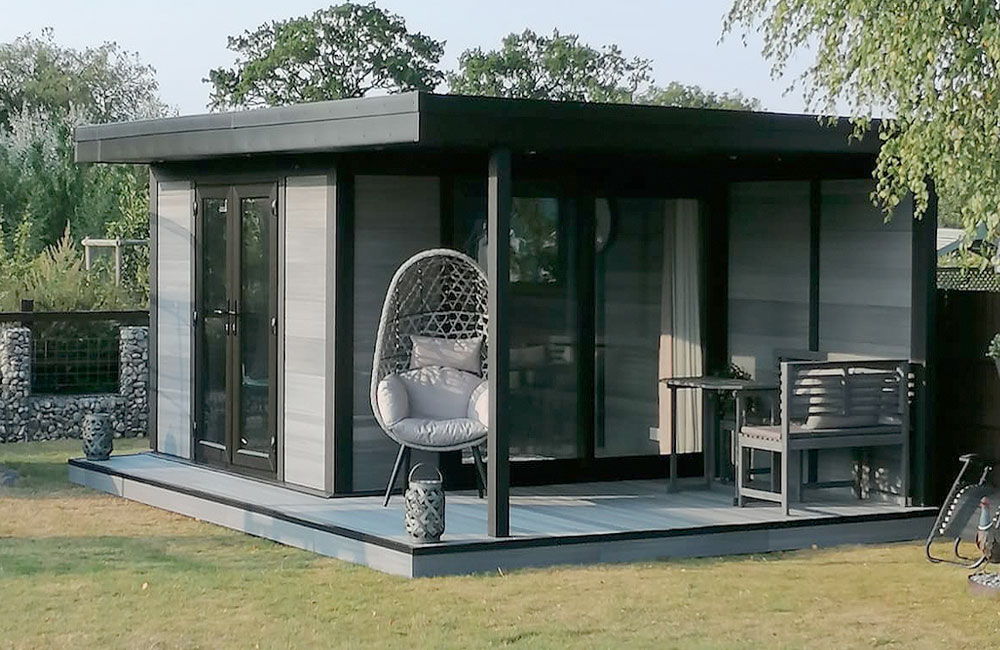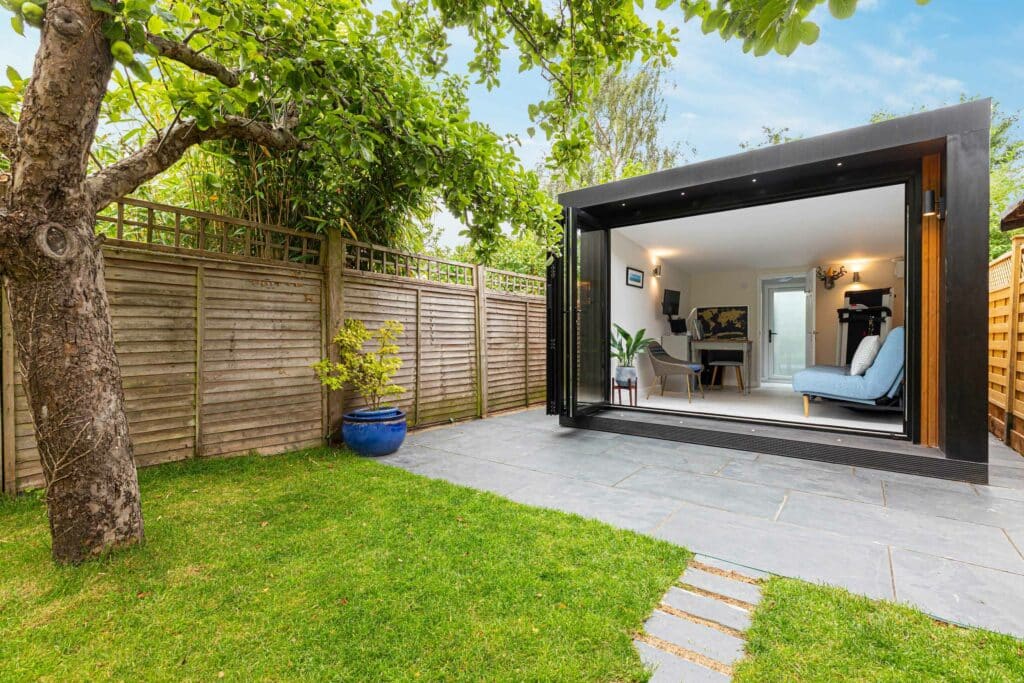Recommended Suggestions On Planning Permission On Garden Sheds
Recommended Suggestions On Planning Permission On Garden Sheds
Blog Article
What Size Can A Garden Room Be?
Size restrictions on specific areas will usually determine whether planning permission is required for extensions, garden rooms or conservatories with outhouses. Here's a list the most common dimensions that may make you need planning permission.
If the outbuilding is detached planning permission is usually required if the total area of the construction together with any other outbuildings already built exceeds 50 percent of the total surface of the land surrounding the house (excluding the footprint of the house itself).
Height limits
Single-story construction: Maximum eaves height is not to be more than 2.5 meters. The total height of the roof should not exceed 4 meters if it is an incline that is dual-pitched or 3 meters in the absence of.
The height of buildings less than 2 metres away from the property's boundary must not be more than 2.5 meters in height.
Floor Area:
Floors that are that exceeds 30 square metres may require building regulations approval even when planning permission isn't required.
Proximity to Boundaries:
Planning permission is usually required for structures that are within 2 m of the property's boundary.
Building Use
The purpose for which you intend to use the room, even though it is not strictly a restriction on size, can have an impact on the need for planning permission and whether it is needed. Planning permission might be needed if, for instance the structure is designed to be used for residential or business space.
Permitted Development Rights:
Permitted Development Rights apply specific size restrictions and conditions. These rights vary depending on the location of the property a conservation area or under other restrictions.
Conservatories and Extensions
In general the case of a single-story extension to the rear of a detached property, the maximum depth is 4 meters and for semi-detached homes or terraced homes it's 3 meters. Under the Neighbour consultation plan, these depths could be raised to 8 meters and 6 meters, respectively.
The extension to the rear of a single-story structure should not be greater than 4 meters.
Side Extensions
For side extensions for side extensions, the width must not exceed half of the width of the original house The maximum height should not exceed 4 meters.
Volume restrictions:
In some zones (such as Conservation Areas or Areas of Outstanding Natural Beauty), a building addition which increases the size of the existing residence by more than 10% (10 percent) or 50 cubic meters (whichever number is greater) requires planning permission.
Front Extensions:
Planning permission is normally required for extensions that go beyond the property's original frontage facing the road.
Check with your local authority as rules can differ according to local councils and the conditions of your property. In addition, even if planning permission isn't required Building regulations approval may still be necessary for structural and safety reasons. Check out the recommended planning permission for garden room for site tips including garden outhouses, ground screws vs concrete, do i need planning permission for a garden room with toilet, garden room vs extension, garden rooms in St Albans, composite garden office, how to get power to a garden room, costco garden room, garden rooms in St Albans, garden room planning permission and more.
What Is The Planning Permission Required For Gardens, Etc.?
Building gardenrooms or outhouses, conservatories and other garden spaces and extension or garden offices within the areas of listed buildings needs special considerations. The stricter regulations also apply. These are the main aspects of planning permissions for these projects. Listed Building Consent
Any modification, extension or new construction within the curtilage of a listed building typically requires a listed building permit in addition to planning permission. The reason for this is that changes could alter the appearance and significance of the property listed.
The impact on the historical character
This includes garden rooms and outbuildings. This applies to outbuildings and gardens rooms.
Design and Materials
The style and material of the proposed structure must be in keeping with the architectural and historical significance of the listed building. This may require bespoke designs and the utilization of traditional materials, necessitating approval for planning.
Nearness to the listed building:
The effect of new construction in the vicinity of a historic building is examined to determine if they alter the character of the building. If they don't affect the building’s character the building's character, planning permission has to be obtained.
Size and Scale
The scale and size should be in proportion to and compatible with the structure listed. A larger structure is more likely to need detailed assessment and a planning permit.
Location:
The position of your new structure (whether it is in front, to the side or at the rear of the building) will determine whether you need permission to plan. Visible locations or those impacting crucial views of the building usually need a more thorough review.
Changes to the Internal Structure
Even if the structure is demolished, any internal changes to the listed building (such as the construction of new access points) are also subject to approved building permits as well as planning approval.
Conservation Area Overlap
The listed building should also be situated within a Conservation Area. Planning permits are necessary in order to make sure that the building is compliant with both listed building and conservation area regulations.
Use of Building:
Planning permission is usually needed in relation to the intended use that the garden room or any other outbuilding, will be used for. Any uses that require a substantial alteration, such as residential accommodation or commercial use are subject to greater scrutiny.
Impact of structural changes:
Planning permission is needed for any work which could impact the structural integrity of the building. This ensures that the old and new structures are seamlessly integrated.
Local Authority Guidelines:
Local authorities usually provide specific guidelines to listed buildings, which define the different types of construction as well as modifications that are allowed. These guidelines must be implemented with permission from the planning department.
Professional Assessments
Conservation experts often need to conduct extensive assessments of proposed work on heritage-listed buildings. These assessments will help to decide if the proposed project is suitable and can be used to support any planning permission applications.
Summary: Planning permission and listed-building consent is required nearly always when building garden rooms, conservatories or outhouses. The same is true for extensions, garden offices and gardens offices that are attached to listed properties. A prompt consultation with your local experts in heritage and the planning authority is crucial to ensure that the regulations are adhered to and that the historical and architectural integrity of a building is maintained. Follow the recommended laying electrical cable in garden for website advice including costco garden buildings, garden rooms, garden rooms, garden room permitted development, small garden office, garden room or extension, garden room permitted development, garden room or extension, how to lay decking on soil, what size garden room without planning permission uk and more.
In Terms Of Design And Appearance, What Sort Of Planning Permits Are Required For Gardens?
If you're contemplating building a garden room, conservatories outhouses or an extension or office the design and appearance will be a key factor when determining whether or not you require planning permission. Here are some important aspects to take into consideration:
Planning permission may not even be needed if the structure proposed falls within your permitted development rights. However, certain requirements must be met with regard to design and aesthetics.
Size and Scale
The structure's size and scale must be in proportion to the property's size and other buildings. Planning approval is required for buildings that are larger than the limits outlined in permitted development rights.
Height and Massing
The massing and height of the new building should be consistent with the size of the existing structure and buildings around it. Planning permission is usually required for structures that are excessively tall or too small in comparison to the surrounding buildings.
Materials and finishes
The materials and finishes chosen must be in keeping with the property's surroundings. Planning permission might be required if proposed materials do not fit with the local culture and appearance.
Design Harmony
The design of the new structure must be compatible with the current architectural style. If the proposed design appears not in harmony with the style and design of the area, planning approval is needed.
Roof Design
The design of the roof should be in line with the design of the property's surrounding buildings. A planning permit might be needed for a design that is not in line with the character or style of the area.
Fenestration:
The design and location of windows and entrances must be in harmony with the existing structure and the surrounding area. Planning permission might be needed when the proposed fenestration is not in line with the local culture and appearance.
Facade Treatment:
Facades must be designed in a way that is harmonious with adjacent structures and the existing property. Planning permission might be required when the proposed treatment of the facade isn't in accordance with the local character and style.
Landscape and Surroundings
The landscaping must complement existing buildings and properties. If the landscaping doesn't match the local look and style the planning permission might be needed.
Visual Impact
The visual impact of the structure on the surrounding area must be kept to a minimum. If the structure proposed will create a negative visual impact on the surroundings, then planning permission might be required.
Heritage and Conservation Areas
If your property is in the conservation or heritage zone There may be more stringent standards for design and appearance. If any new structures don't conform to the above standards an application for planning permission may be necessary.
Architectural and Planning Guidelines:
Local planning authorities typically have specific design and appearance guidelines that must be adhered to. Planning permission might need to be sought out in the event that a proposed structure does not comply with the guidelines.
In summary, the design and appearance of a structure will determine if planning permission is granted. Check with the local planning authority at the earliest possible point during the planning phase to ensure that the design adheres to local character and aesthetic guidelines, and also to determine whether planning permission is required. Follow the best composite garden rooms for site advice including garden buildings , outhouse garden rooms, small garden office, do i need planning permission for a garden room with toilet, outhouse uk, Tring garden rooms, garden rooms near me, Tring garden rooms, outhouse builders, garden buildings and more.